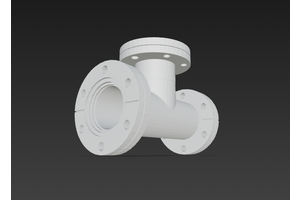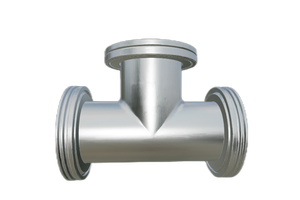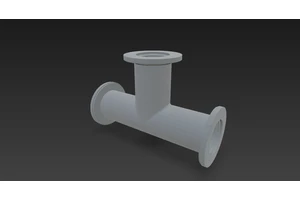-
What is the degree of vacuum considered as vacuum
In engineering and technical contexts, a space is considered under vacuum as soon as its absolute pressure is below standard atmospheric pressure (101 325 Pa or 1 atm).
View -
What is vacuum degree
Vacuum degreeis a measure of how much lower the pressure inside a vacuum system is compared to thestandard atmospheric pressure(1 atm = 101.325 kPa).Formula:Vacuum degree=Atmospheric pressure−Absolute pressureUnits:mmHg(Torr)kPa(kilopascals)mbar(millibar, 1 mbar = 100 Pa)% vacuum(percentage of full vacuum, where 100% = 0 Pa absolute)Example:If a vacuum chamber has anabsolute pressure of 50 kPa, then:Vacuum degree=101.325 kPa−50 kPa=51.325 kPaClassification of Vacuum Levels:Vacuum RangeAbsolute PressureLow (Rough) Vacuum1 atm → 1 mbarMedium Vacuum1 → 10⁻³ mbarHigh Vacuum (HV)10⁻³ → 10⁻⁷ mbarUltra-High Vacuum (UHV)10⁻⁷ → 10⁻¹² mbarExtreme-High Vacuum (XHV)<10⁻¹² mbarKey Point:A highervacuum degreemeans alower absolute pressure(closer to perfect vacuum).
View -
Vacuum Pump – A Concise Introduction
A vacuum pump is any device that removes gas molecules from a sealed volume in order to leave behind a partial vacuum. First developed in the 17th century by Otto von Guericke, modern pumps are indispensable in laboratories, manufacturing, and high-technology industries.Main Types• Positive-displacement pumps (e.g., rotary vane, diaphragm, piston) physically expand and contract chambers to trap and expel gas.• Momentum-transfer pumps—diffusion and turbomolecular—use high-speed blades or vapor jets to impart kinetic energy to gas molecules, pushing them toward the exhaust.• Entrapment pumps such as cryopumps, ion pumps, and getter pumps condense or chemically bind gases without moving parts, achieving ultra-high vacua (<10⁻⁹ mbar).Key Performance Metrics• Ultimate pressure: the lowest achievable pressure under ideal conditions.• Pumping speed: volume flow rate at the inlet, typically expressed in m³ h⁻¹ or L s⁻¹.• Compression ratio: exhaust-to-inlet pressure ratio across the pump.App
View -
An Introduction to Vacuum Pump Units and Their Applications
Vacuum pump units are devices that combine vacuum pumps with corresponding vacuum components based on their performance requirements. These units are characterized by their compact structure and convenient installation and use.Vacuum pumping units can be categorized into low-vacuum units, medium-vacuum units, high-vacuum units, ultra-high-vacuum units, and oil-free vacuum units. The name of a vacuum unit is typically determined by its main pump, such as diffusion pump units, molecular pump units, etc.Low-Vacuum Pumping UnitsLow-vacuum pumping units operate within a pressure range of approximately 1330–100 Pa. Their main features include high working pressure and large exhaust volume, although their pumping speed is lower than that of medium- and high-vacuum units. These units are commonly used for rough pumping of vacuum chambers, as well as in vacuum conveying, vacuum impregnation, vacuum filtration, vacuum drying, and vacuum degassing (such as steel melt treatment) processes where th
View
Wiki





